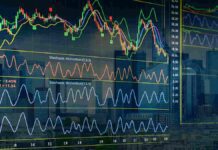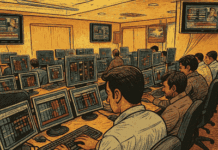When you look back at events, does it sometimes feel like the outcome was obvious all along? That you “knew it” even before it happened? If so, you’ve experienced hindsight bias—the tendency to see past events as more predictable than they really were.
It’s a common psychological shortcut, and it affects everyone: investors, managers, sports fans, even scientists. In the world of finance, hindsight bias can be especially dangerous because it can distort how we evaluate our decisions, leading to misplaced confidence and repeated mistakes.
What Is Hindsight Bias?
Hindsight bias is often summed up by the phrase: “I knew it all along.” After something happens, people tend to believe they had foreseen it—even if they hadn’t.
Psychologists first described it in the 1970s when they noticed that people asked to predict outcomes later misremembered their original forecasts, claiming they had been closer to the truth than they actually were.
In other words, hindsight bias makes us rewrite history in our heads.
Everyday Examples
- Sports: After a football match, fans often say, “Of course the team was going to win, they had the better coach.” But before the game, many weren’t so sure.
- Politics: After an election, people claim, “It was clear the candidate would win by a landslide.” Yet, opinion polls often showed uncertainty.
- Personal life: After a breakup, friends might tell you, “I saw it coming.” In reality, they probably didn’t.
In each case, the outcome feels obvious only after it happens.
Hindsight Bias in Investing
In markets, hindsight bias is everywhere:
- Stock crashes: After the dot-com bubble burst in 2000, many investors said, “It was so clear the valuations were insane.” Yet at the time, enthusiasm was sky-high.
- The 2008 financial crisis: After banks collapsed, people insisted the warning signs were obvious. But very few truly acted on them in real time.
- Individual trades: A trader sells a stock too early, then watches it climb higher. Later, they think, “I should have held on, it was obvious it would rise.” But in reality, nothing is obvious when you’re in the middle of the storm.
Hindsight bias can mislead us into thinking we’re better forecasters than we are. That false confidence can cause us to take more risks, ignore uncertainty, or repeat poor strategies.
Why It Happens
Psychologists suggest a few reasons why hindsight bias is so powerful:
- Memory distortion: We don’t remember our original predictions perfectly, so we “update” them after the fact to match the outcome.
- Sense-making: Our brains like neat stories. Once we know the result, we connect the dots in a way that makes the past feel logical and inevitable.
- Self-esteem protection: Saying “I knew it all along” makes us feel smarter and more in control.
Unfortunately, these mental shortcuts come at a cost when we try to learn from experience.
Consequences of Hindsight Bias
- Poor decision review: If you think the outcome was obvious, you won’t analyze what you could have done differently.
- Overconfidence: Believing your past calls were “right all along” inflates your sense of forecasting ability.
- Blaming others: In business, hindsight bias can create unfair judgments—“Management should have seen this coming”—without acknowledging the uncertainty at the time.
- Risk blindness: It makes markets look less risky than they are, encouraging complacency.
How to Mitigate Hindsight Bias
The good news is that there are practical ways to reduce its impact:
- Keep a decision journal
Write down your reasoning before making an investment or strategic decision. Record what you expect to happen and why. Later, compare the actual outcome with your written notes. This makes it harder to rewrite history in your mind. - Use probability thinking
Instead of saying “this stock will rise,” think in probabilities: “There’s a 60% chance it rises, 40% chance it falls.” This helps you remember that uncertainty is part of every decision. - Review both outcomes and processes
A good decision can lead to a bad outcome (due to luck), and a bad decision can still have a good outcome (by chance). Separate the quality of the decision process from the result. - Invite outside perspectives
Ask colleagues or mentors for feedback. They may see risks you missed, and their independent records help check your memory. - Beware of “obvious” narratives
When someone says, “It was always going to happen that way,” pause and remember: very little in markets is ever inevitable.
A Simple Example
Imagine you invest in a bond yielding 3%. After one year, interest rates drop, and the bond’s price rises. You sell it for a profit. Looking back, you might say, “It was obvious rates would fall after the central bank hinted at cuts.”
But at the time, rates could have stayed flat or even risen. By thinking it was obvious, you give yourself too much credit, making it more likely you’ll overestimate your foresight next time.
Final Thoughts
Hindsight bias is not about being careless or foolish—it’s about being human. Our brains are wired to create neat stories out of messy realities. The danger lies in letting those stories fool us into thinking we’re better at prediction than we are.
For investors, managers, and anyone making decisions under uncertainty, the antidote is humility and discipline:
- Keep records.
- Think in probabilities.
- Judge decisions by process, not just outcome.
If you remember that the future is always uncertain, you’ll be less likely to fall into the “I knew it all along” trap—and more likely to truly learn from experience.
Word of the Day: Hindsight Bias—because the future only feels obvious once it’s in the past.





